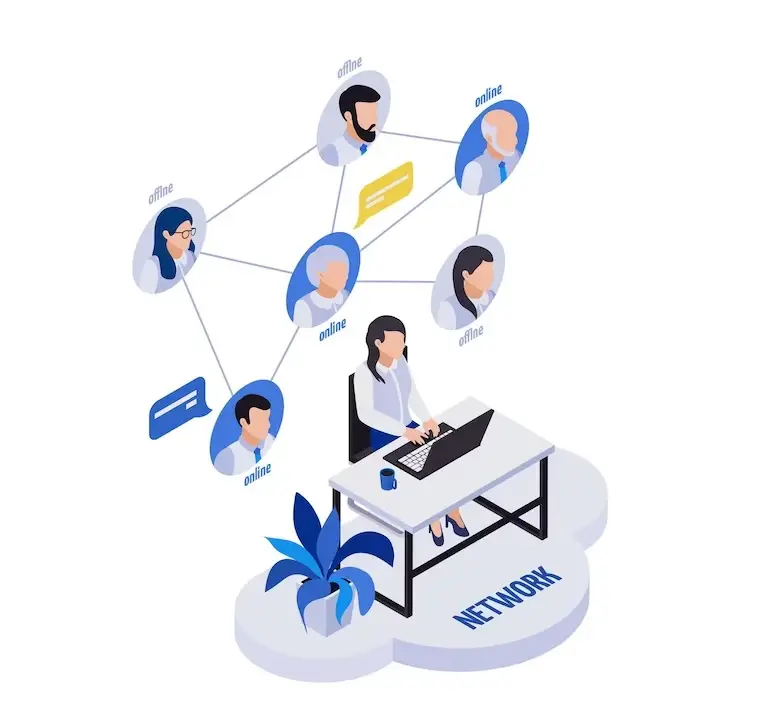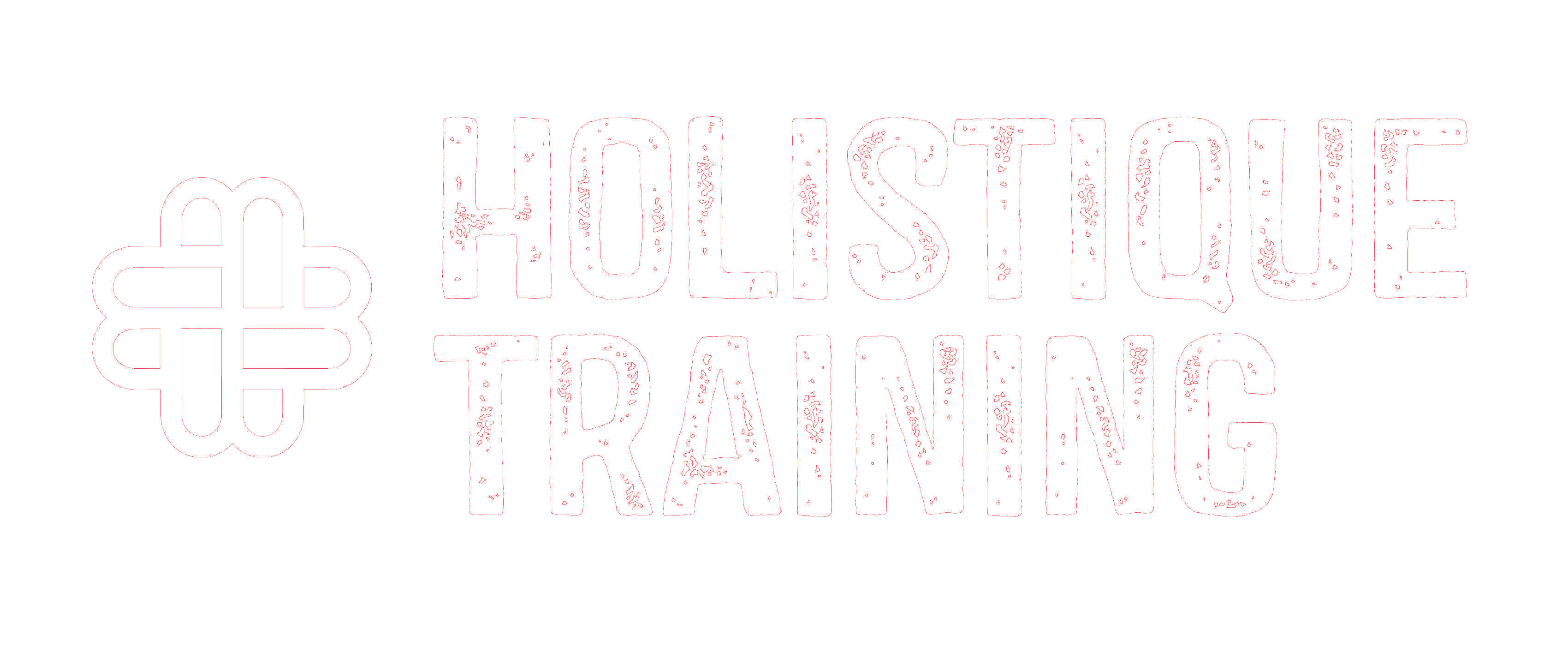The modern workplace is undergoing a profound transformation, with the concept of employee well-being emerging as a pivotal force shaping organisational dynamics. The past few years have witnessed a seismic shift in the understanding of employee well-being, particularly in light of the surging prevalence of remote work. As we navigate this evolving landscape, it becomes imperative to explore not only the changing facets of employee well-being but also the pillars that uphold it, especially in the context of remote work. In this article, we delve into the dynamic changes characterising employee well-being, the vital role it plays in remote work, and the core pillars that pave the way for a comprehensive approach to nurturing employee welfare.
How Did Employee Well-Being Change in the Last Few Years?
The traditional notions of employee well-being have evolved considerably over the last few years. Historically, the focus was largely centred around physical health and safety, often overlooking the emotional and mental aspects of well-being. However, as workplaces became more diverse and inclusive, and as research began to illuminate the profound impact of mental and emotional health on overall productivity, a broader and more holistic perspective took root.
One significant catalyst for change has been the rapid rise of remote work, accelerated further by the global pandemic, where it's evident it has had an impact on the mental well-being of individuals across the board. In a study conducted by AXA, it was revealed that 64% of respondents reported an escalation in their stress levels compared to the pre-pandemic period. Additionally, a staggering 84% acknowledged experiencing a state of mind that was either poor or in a low condition. With the sudden shift to remote work, organisations were compelled to recognise that employee well-being extends far beyond the confines of the physical office space. The challenges of isolation, blurred boundaries between work and personal life, and the absence of face-to-face interactions have necessitated a reimagining of how well-being is understood and supported.
The Importance of Employee Well-Being in Remote Work
The seismic shift towards remote work has ignited a reevaluation of the significance of employee well-being in the modern workplace. As organisations embrace the virtual realm, the importance of fostering a culture of well-being takes on a new dimension—one that encompasses both the physical and psychological welfare of employees.
Mitigating Isolation and Loneliness
Remote work, while liberating in many ways, can lead to an acute sense of isolation and loneliness. The absence of physical proximity and the informal interactions that are commonplace in office settings can leave employees feeling disconnected. Organisations are recognising the need to bridge this gap, implementing virtual team-building activities that go beyond the typical Zoom meetings. Team-building exercises, online workshops, and virtual social events are becoming essential tools to recreate the camaraderie of the office. Regular video check-ins, not just for work-related discussions but also for casual conversations, help maintain personal connections, making employees feel valued and part of a community. Dedicated channels for informal interactions, such as virtual coffee breaks or hobby discussion forums, foster an environment where employees can bond over shared interests, mitigating the sense of isolation.
Table 1: Strategies to mitigate isolation and loneliness in remote work
Preventing Burnout and Work-Life Balance
The flexibility offered by remote work can sometimes blur the lines between professional and personal life. Without the physical act of leaving the office, employees may find it challenging to establish clear boundaries. As a result, they might overwork, leading to burnout. Organisations are actively advocating for scheduled breaks and encouraging employees to step away from their screens periodically. Implementing policies that discourage after-hours emails and meetings helps in safeguarding personal time. Furthermore, educating employees about the importance of setting routines and sticking to them, along with regular reminders to unplug after work, is crucial. By emphasising the significance of maintaining a healthy work-life balance, organisations empower employees to manage their time effectively, preventing burnout.
Nurturing Mental Health
The remote work environment, while providing autonomy, also poses unique challenges to mental health. The absence of in-person support networks can amplify stress and anxiety. Employers are increasingly recognising the importance of mental health support. Organisations are investing in accessible counselling services, allowing employees to seek professional help confidentially. Moreover, fostering an environment where conversations about mental well-being are destigmatize is pivotal. Encouraging mindfulness practices, such as meditation and yoga, and providing stress management workshops equip employees with coping mechanisms. Open dialogues about mental health, facilitated through team meetings or dedicated forums, create a supportive atmosphere where employees feel safe discussing their challenges, thereby reducing the stigma surrounding mental health issues.
Boosting Engagement and Productivity
The relationship between employee well-being and engagement is symbiotic. When employees feel mentally and emotionally supported, they are more likely to engage wholeheartedly in their work. Recognising and appreciating their efforts enhances their sense of belonging and encourages them to contribute innovative ideas. Organisations fostering an environment where employees are valued, listened to, and recognised for their contributions witness increased motivation and productivity. Providing regular feedback, acknowledging achievements, and celebrating milestones are integral components of this process. Additionally, encouraging a healthy work-life balance indirectly fuels engagement by ensuring employees have the energy and enthusiasm to invest in their tasks wholeheartedly.
Strengthening Organisational Resilience
The ability of an organisation to navigate challenges and uncertainties hinges on the well-being of its workforce. Remote work, especially during crises, underscores the need for a resilient team that can adapt to changing circumstances. By prioritising employee well-being, organisations equip their workforce with coping mechanisms and emotional resilience. Employees who feel supported are better prepared to handle unexpected challenges, ensuring the organisation can weather storms effectively. Additionally, organisations fostering mental and emotional well-being create an atmosphere of psychological safety, where employees feel comfortable expressing concerns and proposing innovative solutions, enhancing the organisation's overall adaptability.
Fostering Loyalty and Retention
Employee well-being initiatives are not just about the present; they also lay the foundation for a stable future. Organisations that prioritise their employees' holistic development foster a deep sense of loyalty. When employees feel valued, supported, and understood, they are more likely to remain committed to the organisation. This commitment, in turn, reduces turnover rates, ensuring the organisation retains experienced talent. Employees who perceive that their well-being is a priority are more likely to invest in the organisation’s success, creating a positive cycle of loyalty and retention.
In essence, the importance of employee well-being in remote work goes far beyond mere job satisfaction. It directly impacts the emotional, mental, and physical health of employees, influencing their engagement, productivity, and resilience. Organisations that recognise and address the multifaceted aspects of well-being are better equipped to create a thriving remote work environment where employees can flourish both personally and professionally.
The Pillars of Employee Well-Being in Remote Work
Transitioning from traditional office spaces to remote work setups has brought to light a new set of challenges that impact the well-being of employees. Navigating these challenges requires a comprehensive approach that encompasses various pillars of employee well-being:
1. Physical Well-Being
In the realm of remote work, physical well-being takes centre stage. With the absence of ergonomic office setups, employees might end up working in less-than-ideal environments. Organisations are stepping in by providing guidelines on creating ergonomic workstations at home. This includes advice on proper chair height, screen placement, and keyboard usage to minimise strain. Encouraging regular exercise and healthy eating habits is crucial. Remote wellness programmes that offer fitness classes and promote physical activity during work breaks are becoming increasingly common. Additionally, reminding employees to take regular breaks and engage in physical activities counteracts the sedentary nature of remote work, ensuring their overall physical health is maintained.
2. Mental and Emotional Well-Being
The isolation inherent in remote work can have a profound impact on mental health. Employers are now actively focusing on mental and emotional well-being. Creating an environment where discussions about mental health are destigmatize is vital. Offering accessible resources such as counselling services provides a safety net for employees facing mental health challenges. Encouraging mindfulness practices, stress management techniques, and open conversations about mental well-being foster a supportive atmosphere. Providing mental health days as part of company policies sends a powerful message that mental health is as important as physical health, promoting a holistic approach to well-being.
3. Work-Life Balance
Maintaining a healthy balance between work and personal life is fundamental for remote employees. The flexibility of remote work, while advantageous, can lead to overworking and burnout if not managed effectively. Organisations are emphasising the significance of setting clear boundaries. Encouraging employees to establish routines that demarcate work hours from personal time is crucial. Implementing policies that discourage after-hours work emails and meetings respect employees' personal time. Training managers to be cognizant of their team members' workload and ensuring they take breaks is integral. By promoting the importance of a balanced lifestyle, organisations empower employees to thrive both in their professional roles and personal lives.
Table 2: Comparison of well-being initiatives in remote work
4. Social Connection
One of the challenges of remote work is the absence of face-to-face interactions. Humans are social beings, and meaningful social connections are essential for well-being. To bridge this gap, organisations are fostering virtual social connections. Regular virtual team-building activities, ranging from trivia games to online cooking classes, create opportunities for employees to interact informally. Frequent check-ins, not just for work-related matters but also for personal catch-ups, help maintain social bonds. Informal virtual coffee breaks and chat channels for non-work-related discussions contribute to a sense of belonging. Encouraging employees to share their experiences, hobbies, and achievements in dedicated forums further nurtures social connections in the virtual space.
5. Professional Development
Remote work provides an opportunity for continuous learning and growth. Organisations are encouraging employees to focus on professional development. Virtual workshops, online courses, and skill development programmes empower employees to enhance their skill sets. Providing access to resources that facilitate learning, such as e-books and industry webinars, underscores the organisation's commitment to their employees' long-term growth. Additionally, offering mentorship programmes and career advancement opportunities within the organisation motivates employees to invest in their professional development, ensuring that remote work becomes a platform for continuous learning and self-improvement.
6. Recognition and Appreciation
In the virtual landscape, expressing appreciation and recognition requires deliberate efforts. Regularly acknowledging employees' efforts and achievements is crucial for morale and well-being. In fact, according to ProofHub, a majority of employees, specifically 58%, believe that enhancing employee recognition is a key area where leaders could further enhance employee engagement. Publicly praising employees for their accomplishments, whether through virtual awards ceremonies or shout-outs in team meetings, reinforces their value to the organisation. Personalised messages of appreciation for a job well done create a positive work environment. Recognising employees not just for work-related successes but also for their contributions to the team’s well-being, such as organising virtual events or supporting colleagues, fosters a sense of pride and belonging.
7. Flexibility and Autonomy
The hallmark of remote work is flexibility. Employees have the autonomy to manage their tasks and time independently. Organisations are embracing this pillar by granting employees the freedom to structure their workday in a way that suits their productivity peaks. Providing autonomy while maintaining clear expectations ensures employees have control over their work, contributing to a fulfilling remote work experience. Trusting employees to manage their tasks instils a sense of ownership, boosting their confidence and overall job satisfaction.
Incorporating these pillars into the fabric of remote work not only enhances employee well-being but also contributes to a vibrant and productive virtual workplace. By prioritising these aspects, organisations create an environment where employees thrive, ensuring their holistic well-being and, in turn, the overall success of the organisation in the modern, remote work landscape.
Steps to Foster Employee Well-Being
Navigating the complex terrain of remote work demands a strategic and proactive approach to fostering employee well-being. To create a thriving virtual work environment, organisations must take deliberate steps that cater to the unique challenges and opportunities presented by this new paradigm:
1. Conduct Well-Being Assessments
Understanding the specific well-being needs of your remote workforce is the first step towards fostering a supportive environment. Regular well-being assessments, conducted through surveys or feedback sessions, provide invaluable insights. These assessments delve into various aspects of well-being, such as mental health, work-life balance, and job satisfaction. Analysing this data enables organisations to pinpoint challenges and tailor well-being initiatives accordingly. Feedback from employees not only informs decision-making but also demonstrates that their well-being is a priority, fostering a sense of belonging and trust.
2. Provide Resources and Support
A comprehensive array of resources is essential to cater to the diverse needs of remote employees. Wellness programmes that offer fitness classes, yoga sessions, and meditation workshops promote physical and mental well-being. Accessible mental health resources, including counselling services and stress management tools, are critical. According to a 2021 survey, a significant 79% of employees expressed confidence in their company's well-being programmes, stating that these initiatives enabled them to maximise productivity. Similarly, the same percentage believed that these programmes played a vital role in preventing illness, highlighting their positive impact on overall health and well-being. Organisations are now also investing in self-care resources such as apps for mindfulness and relaxation. Encouraging employees to actively engage with these offerings and emphasising that seeking support is a sign of strength fosters a culture where well-being is prioritised and normalised.
3. Promote Communication and Feedback
Transparent and open communication is the backbone of a thriving remote work culture. Establishing channels for feedback, suggestions, and concerns is crucial. Regular check-ins with team members provide a platform for discussing challenges, sharing successes, and collectively brainstorming solutions. Active listening during these interactions is vital, making employees feel valued and understood. Virtual town halls or forums where leadership addresses concerns directly create a sense of transparency and inclusivity. By fostering a culture of open communication, organisations empower employees to voice their opinions, enhancing their sense of agency and well-being.
4. Lead by Example
Leadership sets the tone for organisational culture. When leaders demonstrate a commitment to well-being, employees are more likely to follow suit. Managers and executives are increasingly encouraged to model healthy habits by taking regular breaks, adhering to work-life boundaries, and prioritising self-care. Sharing personal well-being routines, such as exercise regimens or mindfulness practices, humanises leaders and creates relatability. When employees witness leadership actively valuing well-being, they feel validated in prioritising their own health, both mental and physical. Leaders who invest in their well-being not only set a positive example but also contribute to a culture where self-care is valued.
5. Invest in Training
Equipping managers and supervisors with the skills needed to support their teams’ well-being is essential. Training programmes emphasising empathetic leadership, active listening, and creating a psychologically safe environment empower managers to identify signs of burnout, stress, and mental health concerns. These programmes also teach managers how to effectively navigate conversations about well-being, ensuring that support is offered in a sensitive and understanding manner. Managers trained in recognising the well-being needs of their team members can proactively address challenges, fostering a culture where employees feel cared for and supported.
6. Celebrate Achievements
Recognising and celebrating well-being milestones and successes within the organisation is pivotal. Regular acknowledgments of individual and collective achievements create a positive work environment. Whether it's acknowledging an employee's commitment to their fitness goals, celebrating a team's successful implementation of well-being initiatives, or highlighting positive changes in the workplace culture, public recognition reinforces the organisation's dedication to employee welfare. Celebratory events, virtual award ceremonies, or personalised messages of appreciation uplift team morale, fostering a sense of pride and accomplishment among employees.
In conclusion, fostering employee well-being in remote work requires a multifaceted approach. By conducting well-being assessments, providing diverse resources, promoting open communication, leading by example, investing in training, and celebrating achievements, organisations can create a nurturing environment where employees not only thrive but also feel valued and supported. This holistic approach to employee well-being not only enhances job satisfaction and productivity but also establishes a resilient and engaged workforce, essential for the success of any organisation in the evolving landscape of remote work.
Conclusion
Employee well-being has evolved from being a fringe consideration to a foundational element of a successful organisation. The rise of remote work has amplified the importance of holistic well-being strategies that address physical, mental, emotional, and social aspects of employees' lives. By understanding the pillars of employee well-being and taking proactive steps to foster it, organisations can create a thriving remote work environment that nurtures engaged, resilient, and productive employees.
Amid this transformative journey, our specialised course, ‘Virtual Team Management & Movement,’ stands as a valuable resource. This course offers practical insights and strategies to effectively manage remote teams, ensuring their well-being while optimising performance. By enrolling in this course, you'll equip yourself with the skills needed to foster a thriving virtual work environment that uplifts both employees and organisations alike.
Frequently Asked Questions(FAQ)
Why is employee well-being particularly important in remote work settings?
Employee well-being in remote work settings is vital due to the unique challenges it presents. Beyond physical health concerns, remote work often leads to feelings of isolation, blurred work-life boundaries, and increased mental health challenges. Prioritising employee well-being in these settings ensures not only their engagement but also acts as a preventive measure against burnout. A supportive work environment that addresses these aspects fosters a sense of belonging and community among remote workers, enhancing their overall job satisfaction and productivity.
How does the concept of work-life balance translate into remote work?
The concept of work-life balance takes on a new dimension in remote work scenarios. The flexibility of remote work can blur the lines between professional responsibilities and personal time, making it challenging to maintain a healthy balance. Encouraging employees to establish clear work hours, take regular breaks, and unplug after work helps in creating distinct boundaries. Emphasising this balanced approach not only enhances employee well-being by reducing stress but also significantly boosts productivity. Moreover, preventing burnout through a well-maintained work-life equilibrium ensures that employees remain motivated and focused on their tasks.
How can organisations foster social connection among remote employees?
Organisations can foster social connections among remote employees through various initiatives. Implementing virtual team-building activities, such as online games and collaborative projects, provides opportunities for interaction. Regular check-ins, both formal and informal, create avenues for team members to connect on a personal level, mitigating feelings of isolation. Additionally, organising informal virtual gatherings, such as virtual coffee breaks or themed online events, nurtures a sense of camaraderie within the remote team. These initiatives strengthen interpersonal bonds, enhancing team cohesion, and ensuring that remote employees feel connected to their colleagues and the organisation as a whole.
How does recognising and appreciating employees impact their well-being?
Recognising and appreciating employees significantly contributes to their overall well-being. Regular recognition, whether through public praise, awards, or personalised acknowledgments, boosts morale and fosters a positive work environment. When employees feel valued and appreciated for their contributions, it enhances their self-esteem and job satisfaction. This positive reinforcement creates a sense of belonging within the organisation, leading to increased motivation and commitment. Employees who receive recognition for their efforts are more likely to engage with their work passionately, leading to higher productivity and a sense of fulfilment in their roles.
How can organisations promote mental health awareness and support in remote work?
Promoting mental health awareness and support in remote work settings is crucial for employee well-being. Creating a stigma-free environment where discussions about mental health are encouraged and normalised is fundamental. Organisations can provide access to counselling services, share mental health resources, and offer guidance on self-care practices. Empowering employees to prioritise their mental well-being and seek help when needed promotes a culture of understanding and empathy. By providing resources and encouraging open conversations about mental health, organisations not only support their employees but also contribute to a healthier and more resilient work environment.




















